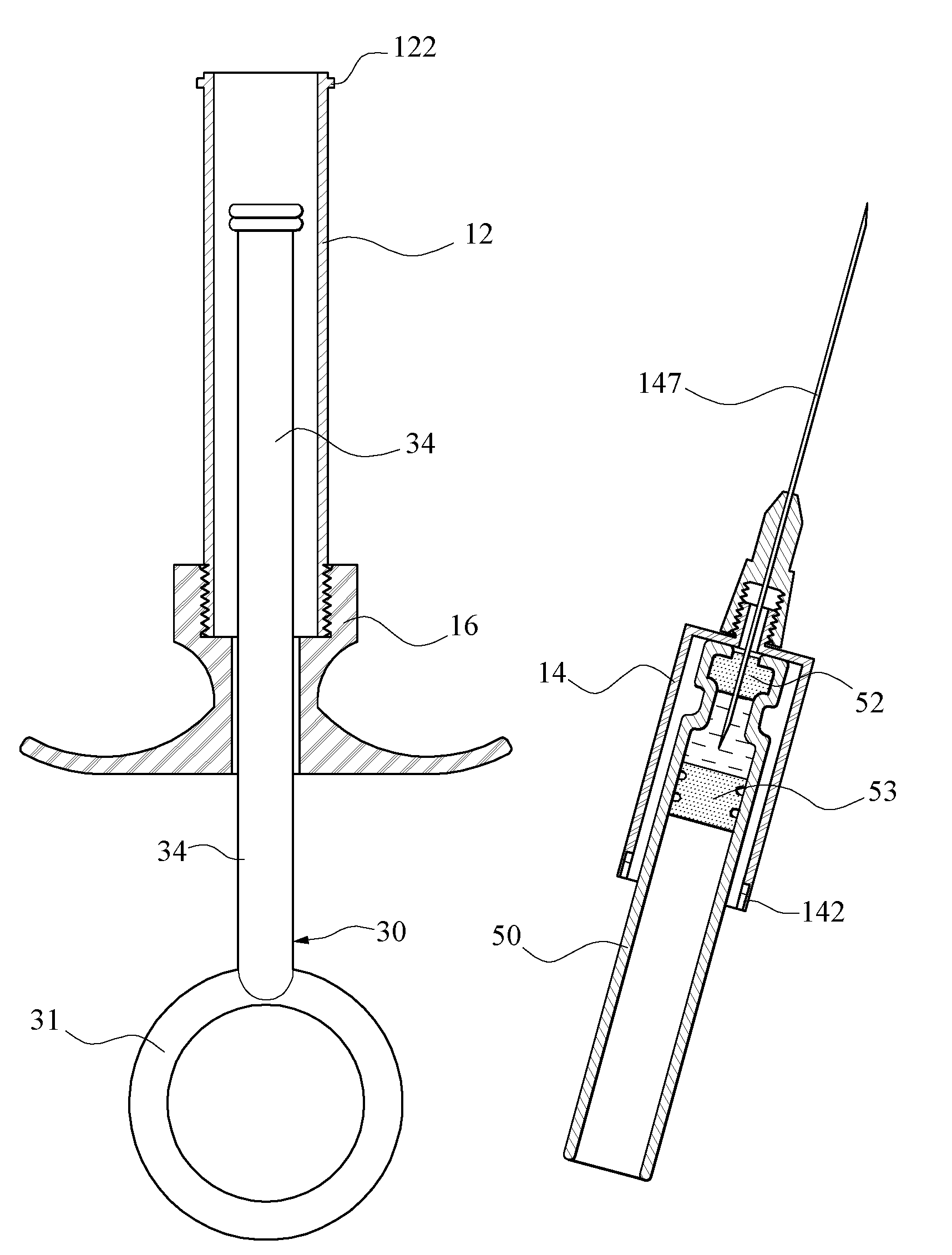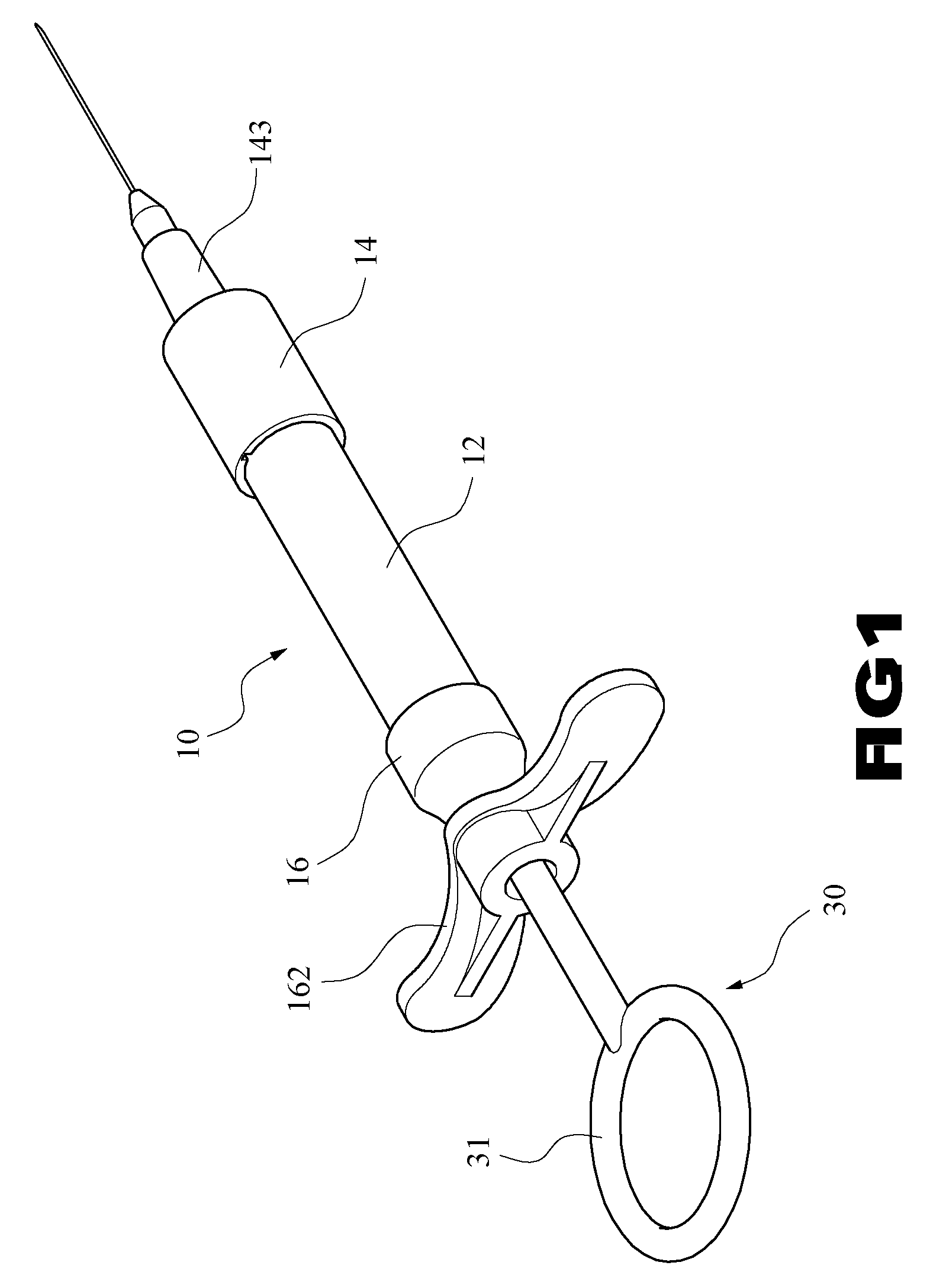Safety syringe with disposable components after use
a safety syringe and disposable technology, applied in the field of safety syringes, can solve the problems of increasing the operation cost of a hospital, contaminating the medical worker with microorganisms, and stainless steel syringes, so as to eliminate the possibility of contamination and save costs
- Summary
- Abstract
- Description
- Claims
- Application Information
AI Technical Summary
Benefits of technology
Problems solved by technology
Method used
Image
Examples
first embodiment
[0036]Referring to FIGS. 4, 5, and 6, further assembly and a fluid dispensing operation of the first configuration of the first embodiment will be described in detailed below. Insert the fluid cartridge 50 into the hollow syringe barrel 12. Next, attach the enlargement 32 to the sliding member 53. Next, secure the inner threads 161 onto the outer threads 123. As an end, the syringe barrel 12 and the wing nut member 16 are secured together (i.e., the syringe is assembled). For filling the fluid cartridge 50 with fluid 51, a medical worker may further insert the fluid cartridge 50 into the syringe barrel 12 until a front end of the fluid cartridge 50 is stopped by a bottom end of the needle assembly 14. At the same time, a rear pointed end of the needle 147 pierces through the rubber member 52 into the fluid cartridge 50. Next, slide the sliding member 53 to a position proximate the rear end of the needle 147 by holding and pushing the ring 31. Next, pierce a front pointed end of the ...
third embodiment
[0042]Referring to FIGS. 13 to 16, a fluid dispensing operation of the third embodiment will be described in detailed below. First, a medical worker may hold and push the ring 31 to cause the spring 35 to contact the sliding member 53 and further slide the fluid cartridge 50 forward until the front end of the fluid cartridge 50 is stopped by the bottom end of the needle assembly 14. At the same time, the rear pointed end of the needle 147 pierces through the rubber member 52 into the fluid cartridge 50 (see FIGS. 13 and 14). Next, the medical worker may introduce the needle 147 into the skin of a patient to inject fluid 51 by slidably pushing the sliding member 53.
[0043]After finishing the first injection, the medical worker may rotate the wing nut member 16 clockwise to further holding the casing of the fluid cartridge 50 in place by urging the slip resistant ring 13 through the cylinder 11 against the rear casing end of the fluid cartridge 50 prior to piercing a pointed end of the...
PUM
 Login to View More
Login to View More Abstract
Description
Claims
Application Information
 Login to View More
Login to View More - R&D
- Intellectual Property
- Life Sciences
- Materials
- Tech Scout
- Unparalleled Data Quality
- Higher Quality Content
- 60% Fewer Hallucinations
Browse by: Latest US Patents, China's latest patents, Technical Efficacy Thesaurus, Application Domain, Technology Topic, Popular Technical Reports.
© 2025 PatSnap. All rights reserved.Legal|Privacy policy|Modern Slavery Act Transparency Statement|Sitemap|About US| Contact US: help@patsnap.com



